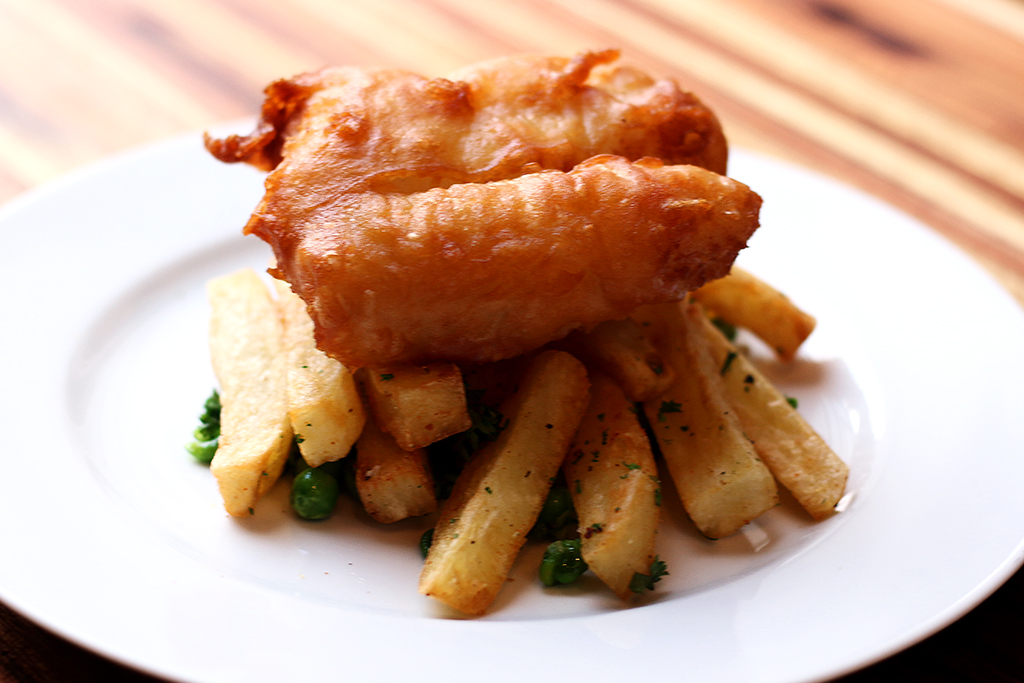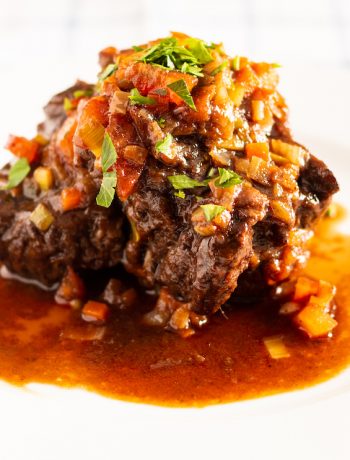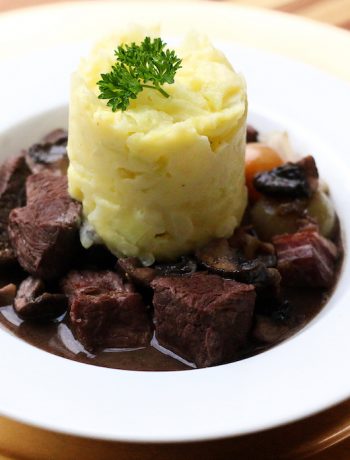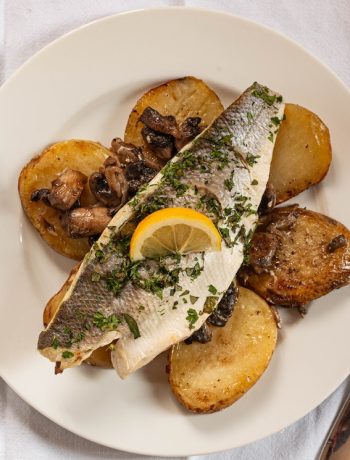Fish and chips has been arguably usurped by curry as the national dish of the UK. However, those on the outside of the UK looking in are still largely under the impression that fish and chips reigns supreme among the food choices of the Brits. It is true that, despite the deft overtake made by curry, fish and chips still has a place on the podium of important cultural foodstuffs of the UK. For that, they are worthy of a nosey.
The popularity of fish and chips, and the ferocity by which its principles and secrets are guarded, mean that the origins of the dish have been researched extensively. In brief, in 19th Century Britain, there were chip shops in the North, and fish shops in the South. It took until around 1863 for someone to start selling both items together. A couple of outlets started doing this at around the same time, so it is not possible to determine who first invented it. For the whole skinny on fish and chips, you really don’t need to look further than Wikipedia.
I have recently developed a problem with fish and chips from the chippy. I don’t eat them often because getting a good edition is harder than you might think. The principle problem with fish and chip shops is that they wrap the dish up in paper. This instantly steams the batter and makes it go soft. I have learned to ask for my fish and chips unwrapped – they’re better that way.
The second problem is the chips. British people are becoming very used to chips cooked in a very specific, and carefully researched manner. This recipe comes from Heston Blumenthal. Blumenthal one day set out to produce the perfect chip. After weeks of experimentation, he hit on the perfect formula. Blumenthal boils his chips until they are almost falling apart. He then freezes them before cooking them in a fryer at 130˚C for 7 minutes. He then freezes them again, and finishes them off in the fryer at 190˚C for about 6 minutes.
The point of all this faff is to get a fully, cooked centre, and a crisp outer. Any other method will fail to give you one or the other. The freezing steps remove moisture from the chip – moisture is the enemy of crispiness. This recipe has gone completely viral, and I can assure you that if you go to a decent gastropub in the UK and have chips, they will be triple cooked per Heston Blumenthal. The triple-cooked chip recipe has been so successful that Blumenthal has admitted that when he is dead and gone, his one lasting legacy will be these bloody chips.
I have tried the Blumenthal recipe twice, and I have had to make a practical modification to it for ongoing chip production – I only parboil the chips for 6 minutes. If they go as far as the Blumenthal ones, many are lost to breakage, and the process can be frustrating. The result from parboil is still extremely good, but it is not quite that puffball of fluffy goodness that you have doubtless eaten. I have seen many videos of restaurant chip production, and parboil is a very common shortcut.
One day, I was working while watching a YouTube clip of Heston making fish and chips. I got one on me to go and buy some for lunch. I went into the local fish and chip shop and idly asked them if they at least double fry the chips. The answer was, “No, we can’t possibly keep track of two fryers – we just cook them once.” And that explains why fish and chip shop chips are soft, and almost chewy. They are OK for neophyte chip eaters, but if you have had a Blumenthal chip, then the chip shop ones look and taste nasty.
So, I have sort of gone off fish and chips from the ‘chipper,’ and I rarely order them in a pub because there is usually something more interesting on the menu. However, when I started Nosey Chef, I vowed that I would have a go at making them for myself and see if I can get a result that I like. I make chips all the time, but had never had a go at the fish part. I can report that success has been attained, and my online tutor for this was Gordon Ramsay.
Here is Ramsay’s recipe for fish and chips, rewritten a little by me, and with triple cooked chips vaguely according to Blumenthal. The chips will take a day of cooking and freezing. The batter is best made the day before and rested. It certainly should not be used completely fresh.
I really advocate use of the thermostatically controlled deep fat fryer for this. London Fire Brigade recorded 500 injury incidents involving chip pans between 2012 and 2013, and they are pointing the finger of blame at Heston Blumenthal.
Fish and chips
Ingredients
- For the fish:
- 4 cod or haddock fillets, thinner parts cut off
- 120g plain flour
- 100g rice flour
- 1 tsp baking powder
- 1 tsp sugar
- Large pinch of fine table salt
- 170ml lager (I used Peroni; you may need to add a bit more, so don't drink the rest yet)
- 130ml sparkling mineral water
- 1 tsp sea salt
- 8 tbsp plain flour, seasoned with salt and pepper (use Cayenne pepper if you are feeling frisky)
- For the chips:
- 4 large Maris Piper potatoes, chipped (cut off any thin ends)
- 1 tbsp parsley, chopped
- Large pinch of paprika
- Salt and freshly ground black pepper
- For the peas:
- 4 handfuls of frozen garden peas, defrosted
- 1 large shallot, finely chopped
- 15g unsalted butter
- 2 tbsp mint, chiffonade
- Salt and freshly ground black pepper
Instructions
Begin by preparing the batter. Combine the flour, baking powder, sugar and fine salt in a large bowl. Add the beer and water, and mix moderately until just combined and free of lumps. Don't over-mix this or you will strip the gas out of it. The consistency should be such that it will stick to the back of a spoon and slowly slide off it in a long, slow drip – a shade thicker than wallpaper paste. Cover and set aside (chill if you are leaving it overnight).
Next, prep the chips to their mise en place. Place the chips in a pan of cold water and bring to the boil. Boil them for 6 minutes, drain and dry with kitchen paper. Place the chips on a metal baking tray (don't let them touch each other) and freeze.
Once the chips are frozen, heat the fryer to 130˚C and fry the chips for 4 minutes. Fish one out and test him. He should be cooked in the centre. If not, give them another minute but remember that you are not looking for much colour on the chips at this stage. Freeze them again.
When you are ready to eat, start the rest of the dish. Dry the fish with kitchen paper and sprinkle with the sea salt to draw more moisture out. After a few minutes, wipe the salt off, and dredge the fillets fully in the seasoned flour. Roll the fillets in your hands to shake off the excess.
Heat the fryer to 180˚C.
Coat the fish in the batter and hold it in the air for a moment to allow some of the excess to drip off. Hold the fish in the hot oil but don't let go immediately (this will cook some of the batter and stop the fish sticking to the fryer basket). Gently lay the fish in the oil away from you. You may need to do this in batches if your fryer will not comfortably fit four fillets – my fryer will only take one or two. Part-way through the cooking, turn the fish over in the oil using tongs.
The fish is cooked when the batter is a rich golden colour. Ramsay says to wait until the fish floats, but that might not be obvious in smaller frying vessels. Remove the cooked fish to a wire cooling rack.
Finish the chips by frying them at 180˚C until golden (about 2 mins). Toss them in a bowl with the parsley and paprika. Season.
Heat the peas in a frying pan. Add the shallots and butter. Once the butter is melted (we are not looking to actually cook the shallots here), season the peas and add the mint. Toss the ingredients in the pan to combine. Crush the peas with a potato masher.
Serve the peas on a plate, pile the chips on top, and add a piece of fish. Sing Rule Britannia if the moment gets too much for you.



 (7 votes, average: 4.00 out of 5)
(7 votes, average: 4.00 out of 5)


4 Comments
GG
29/06/2021 at 4:03 pmExcellent instruction, details, and flavor. What is your preference for ‘seasoning’ the flour?
Nigel Eastmond
29/06/2021 at 4:04 pmJust salt and pepper.
Nick Winterlanbd
17/04/2025 at 10:48 pmSugar?? Beer?? you know nothing about making batter that is obvious.
Nigel Eastmond
17/04/2025 at 10:58 pmTake that up with Gordon Ramsay. It’s his recipe.